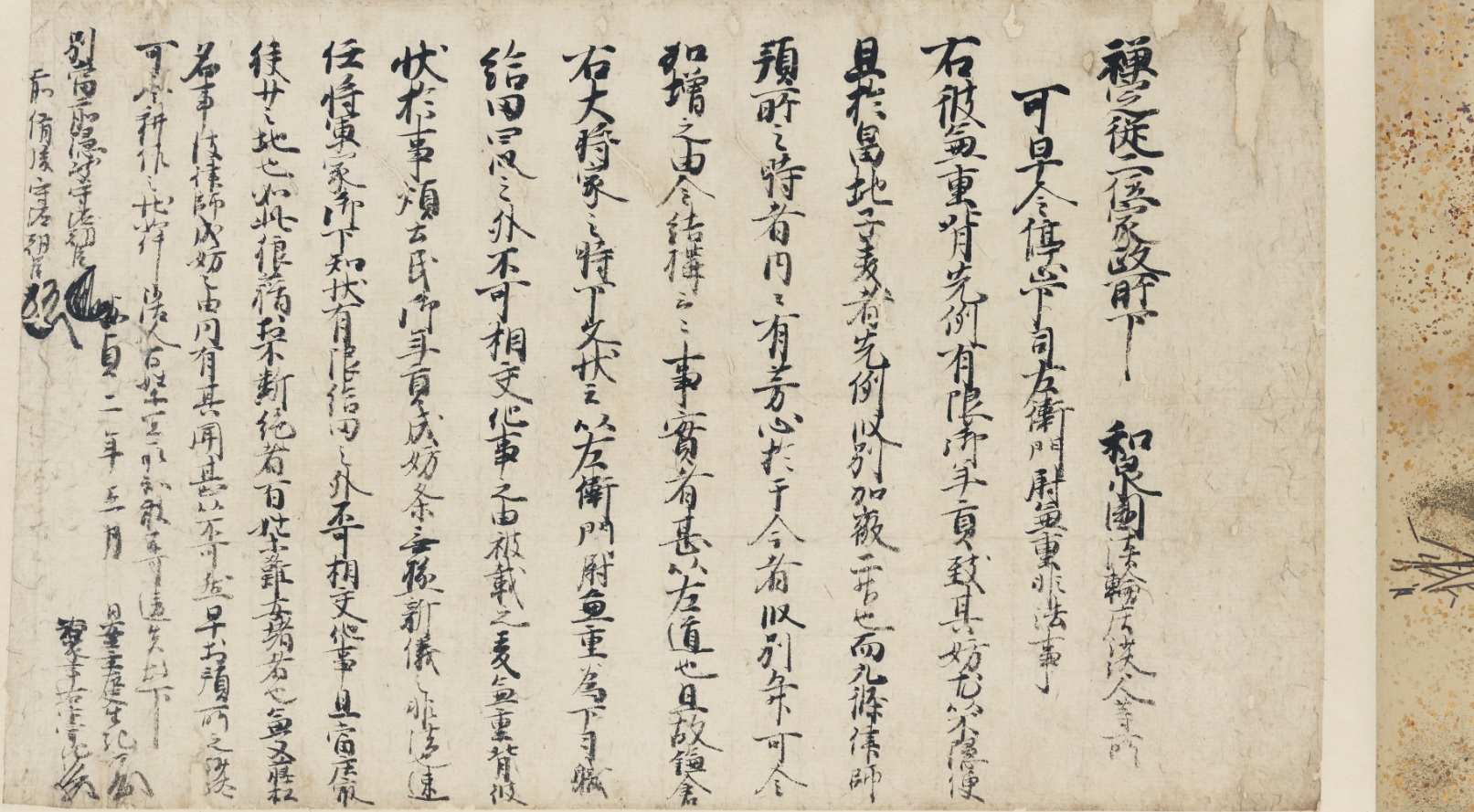Tannowa Document

The documents of the Tannowa collection consist of 53 records which have been pasted into five scrolls. They cover the period from the early 13th through the late 14th century, and provide insight into the actions of the Tannowa, a warrior family who resided in the eponymous Tannowa estate in Izumi province.
This collection is unique in that it provides, in great detail, evidence for the actions of the warriors of the central Kinai region (five provinces near Kyoto), which rarely survive. These document reveal much about social and political conditions during the turbulent 14th century, when wars were fought between the Northern and Southern courts in Izumi from 1331 through 1392.
The most remarkable documents in this collection include edicts from chancelleries of the noble Kujō house, the oldest surviving Tannowa documents, as well as other documents of appointment or records by the Kujō proprietor (ryōke). In addition, a series of documents by Kusunoki Masanori, found in scroll two, are noteworthy, as are records from Ashikaga Takauji, the founder of Japan’s second warrior government.
Joint Project with Princeton University
Kyoto University and Princeton University have initiated a joint project in March 2020 in order to deepen the knowledge and awareness of Japanese history and culture throughout the world. The goal is to disseminate images, transcriptions, translations, and research about Japanese documents owned by the Kyoto University Museum.
The Kyoto University Museum, Kyoto University Graduate School of Letters, Kyoto University Library Network and the Department of East Asian Studies of Princeton University will collaborate in carrying out this project.
▼Click HERE to go to the site by Princeton University.












